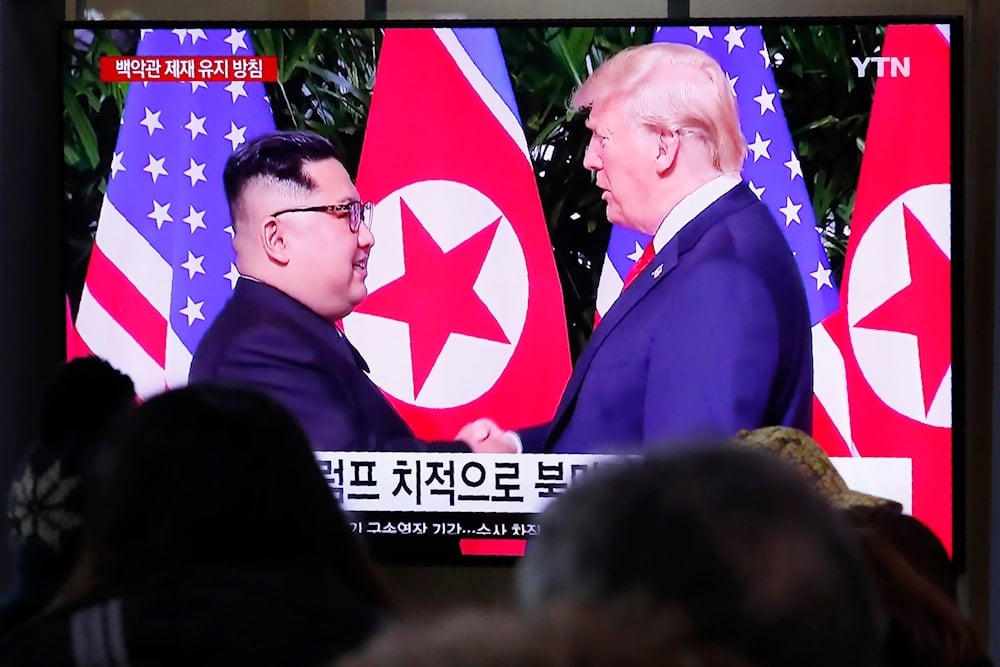South Korea’s spy agency sees possibility of US-DPRK summit
South Korea’s intelligence agency sees a strong possibility of a US-DPRK summit after March, as Pyongyang evaluates Washington’s stance and awaits key regional events.
-

People watch a TV screen showing a file image of DPRK leader Kim Jong Un and US President Donald Trump, right, during a news program at the Seoul Railway Station in Seoul, South Korea, Wednesday, Jan. 1, 2020 (AP)
A South Korean lawmaker said the country’s intelligence agency believes there is a strong chance that the United States and the DPRK will hold a summit, noting that Pyongyang may seek to arrange the meeting sometime after March next year.
“The NIS believes there is a strong possibility of a US-DPRK summit,” lawmaker Park Sun-won told reporters following a parliamentary audit of South Korea’s National Intelligence Service.
Park said the DPRK is assessing the Trump administration’s working-level officials handling its affairs, adding that the NIS believes Pyongyang may seek a Trump–Kim summit after March, following key events including the South Korea–US military drills, a military parade, and the ruling party’s congress early next year.
The leader of the DPRK, Kim Jong UN, previously expressed a willingness to hold talks with the United States if it drops its denuclearisation demands.
During his visit to South Korea ahead of the APEC summit last week, Trump told reporters, “We’ll return, and at some point in the not-too-distant future, we’ll meet with North Korea.”
Kim, Trump's complicated relationship
The first meeting between US President Donald Trump and DPRK leader Kim Jong Un took place in June 2018 in Singapore. It marked a historic moment, being the first-ever summit between a sitting US president and a leader of the DPRK. The talks centered on denuclearisation and easing tensions on the Korean Peninsula. While the summit ended with a joint statement expressing mutual commitment to peace, it lacked concrete steps for implementation.
Their second encounter came in February 2019 in Hanoi, Vietnam. This summit was closely watched, with hopes that it would yield more tangible agreements. However, the talks broke down abruptly when both sides failed to agree on the terms of sanctions relief and denuclearisation. The collapse of the summit exposed the deep mistrust and divergent expectations between Washington and Pyongyang.
Despite the setback in Hanoi, Trump and Kim maintained an unusual diplomatic rapport. They exchanged personal letters and even met again briefly in June 2019 at the Demilitarized Zone (DMZ), where Trump became the first sitting US president to step into DPRK territory. While these interactions were symbolically significant, they did not translate into renewed negotiations or substantive policy breakthroughs.
In 2025, tensions between the US and the DPRK have remained high, with little sign of meaningful diplomatic engagement. Pyongyang has continued to advance its missile and weapons development programs, conducting several tests throughout the year that drew international condemnation. In response, the US has reinforced its military presence in the region and resumed large-scale joint drills with South Korea, which the DPRK routinely denounces as provocative.

 3 Min Read
3 Min Read








